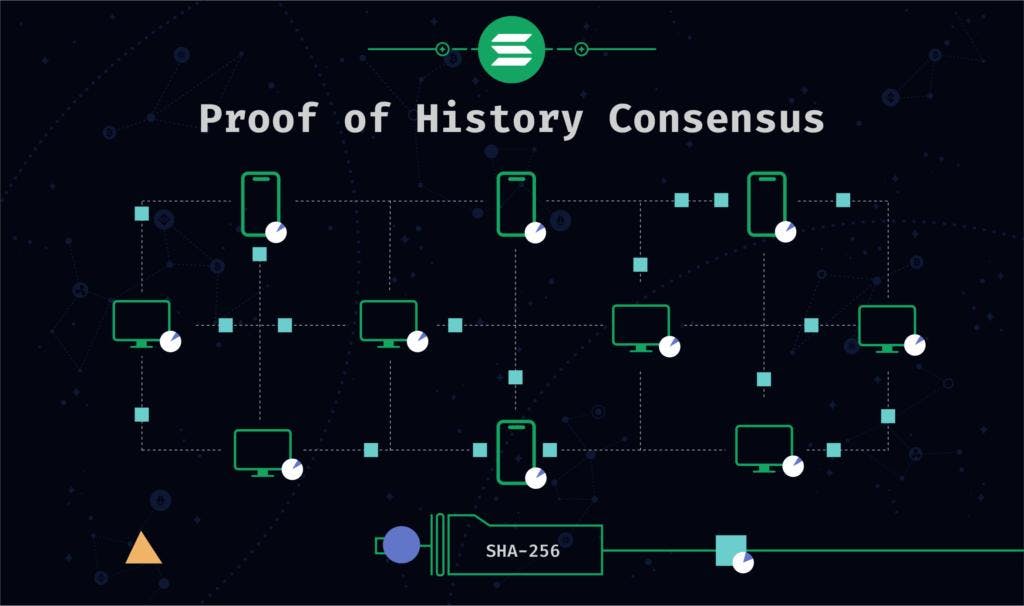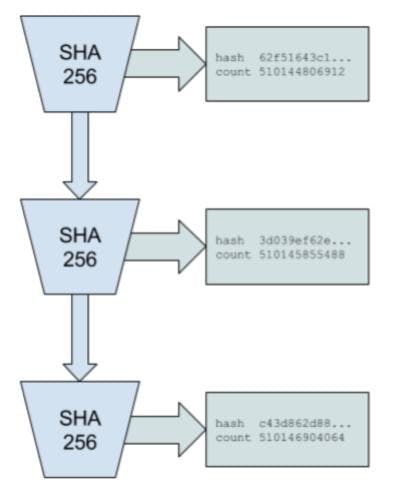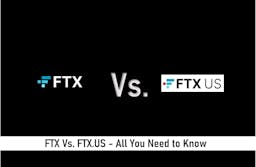
Satoshi coming up with the creation of Bitcoin was nothing short of absolute brilliance. He established a decentralized network that has been functional for the past eleven years by combining a proof-of-work (PoW) consensus mechanism in the absence of proof of history (PoH) with economic incentives, game theory, and cryptography.

Key Takeaways
•Proof of History allows you to encode the passage of time into the blockchain ledger. It employs a relatively new cryptographic idea known as Verifiable Delay Functions (VDFs) which must be solved in a particular number of successive stages.
•PoS in Solana runs on a rotating leader schedule based on their staking pool allocation. As a result, the more tokens staked against any one Validator, the more blocks will be produced in any given time period.
However, individuals have been working to improve on the design of Bitcoin for as long as it has been around. These enhancements are primarily aimed at the PoW consensus approach.
After all, because Bitcoin is based on PoW, it can never attain the throughput of the existing financial system. Under PoW, it takes time to reach agreement, which has a substantial impact on processing rates.
Anyone seeking to create a new method of gaining consensus on a blockchain faces a number of difficulties which are how do you strike a compromise between the opposing requirements of obtaining agreement quickly enough to speed up the system while maintaining decentralization? And how do you make sure that economic incentives are strong enough to prevent bad actors?
Because of these difficulties, eleven years after Bitcoin’s genesis block, only two other approaches to achieving consensus have gained widespread acceptance: proof of stake (PoS) and delegated proof of stake (DPoS).
This, though, has changed as the Solana project has been introduced with new features which have helped minimize the weight of reaching consensus.
The Solana blockchain is built on two novel concepts: Proof of History (PoH) and Tower Byzantine Fault Tolerance (TBFT), which are paired with PoS.
What Is Proof Of History?
Time is an odd notion in the context of a blockchain. Public blockchains are intended to operate in an untrustworthy manner.
All parties must be able to verify every transaction and piece of data stored on the blockchain. Certain data, such as who performed a certain transaction, is easily verifiable since it is linked to their private key.
But when did they make that deal? In a blockchain, there is no central clock, and in a trustless system, it cannot be left up to the miner to check their clock and record the time they mined the block.
As a result, timestamping is as important to consensus as the transaction itself. When the network checks a block, it also verifies the time the block was mined or generated, as well as the time of the transactions included inside it.
Different consensus models use different methods for verifying time, but it is an essential aspect of reaching consensus and so contributes to the weight of consensus.
Proof of History allows you to encode the passage of time into the blockchain ledger. It employs a relatively new cryptographic idea known as Verifiable Delay Functions (VDFs) which must be solved in a particular number of successive stages.
Because computational power can only be applied sequentially by a single CPU core, it is possible to calculate the precise time required to solve the VDF.
As a result, this serves as a time record. Confirming the output of a VDF, like checking PoW, is rapid and straightforward.
Furthermore, the verification can be performed concurrently. Proof of History is completed before consensus, resulting in a method of timestamping that eliminates the need for nodes to attain time consensus.
How Proof of History Works
The proof of history works as follows: First, you run the algorithm from some random beginning value with a cryptographic hash function whose outcome cannot be determined without running the function (e.g., sha256, ripemd, etc.).
Then take the output and send it as the input into the same function again. You should also keep note of how many times the function has been called and the output at each call.
The first option picked could be any string and the New York Times headline could be a typical example.
As an example: Hash of the PoH Sequence Index Operation Output Hash 1 sha256 (“any random beginning value”) hash1 2 sha256 (hash1) hash2 3 sha256 (hash2) hash3, where hashN is the actual hash result.
At each interval, just a subset of the hashes and indices must be published.
Hash Index Operation Output 1 sha256 (“any random beginning value”) hash1 200 sha256 (hash199) hash200 300 sha256 (hash299) hash300.
This collection of hashes can only be computed in succession by a single computer thread as long as the hash algorithm used is collision resistant.
This is due to the fact that there is no way to forecast what the hash value at index 300 will be without executing the algorithm 300 times from the initial value.
As a result of the data structure, we may deduce that real time has elapsed between index 0 and index 300.
In the example in Figure 2, hash 62f51643c1 was produced on count 510144806912 and hash c43d862d88 was produced on count 510146904064.
Based on the PoH algorithm’s previously described features, we may be certain that actual time elapsed between counts 510144806912 and 510146904064.
What Role Does Proof Of Stake Play?
PoS allows for the selection of who will function as a Validator. Anyone who is staking tokens can become a Validator if they have the required hardware.
They can become a Delegator if they have tokens but no hardware. They stake their tokens against a Validator in order to earn interest on the block rewards that the Validator earns.
PoS in Solana runs on a rotating leader schedule based on their staking pool allocation. As a result, the more tokens staked against any one Validator, the more blocks will be produced in any given time period.
What Does This Mean?
Solana has solved the problem of agreeing on time by developing this new invention on consensus and time.
By eliminating this traffic from the network, the project has achieved scalability in the absence of alternatives such as Ethereum’s sharding. The Solana blockchain reaches a throughput of 50,000 transactions per second based on this concept.
These rates are quicker than any other blockchain, making a PoH/TBFT implementation significantly more suitable in situations where speed is essential. The economic incentive approach is likewise similar to PoW, rewarding the network for behaving in its best interests.
EOS’s consensus architecture, DPoS, delivers high throughput but has been heavily criticized for being overly centralized.
Furthermore, the DPoS paradigm promotes voting cartels to develop in order to control the delegation process.
While the Solana model cannot prevent this, the Tower BFT aspect provides a significant deterrent for acting against the network’s interests, providing extra security.
Of course, there have been numerous attempts throughout the years to develop a greater consensus model. However, many blockchains continue to use PoW, PoS, and DPoS.
Solana’s main net, however, has proven that it is faster and more robust than its predecessors, becoming the go-to solution for challenges bordering on scalability.
Frequently Asked Questions (FAQ)
1. Is Solana Proof of Stake or Proof of History?
Solana blends Proof-of-Stake (PoS) with Proof-of-History (PoH), creating a one-of-a-kind hybrid consensus method. PoH guarantees that a blockchain is extremely fast while still keeping its security decentralized.
2. Is Proof of History Efficient?
Proof of History is a strong mechanism that enables hitherto unheard network speeds in blockchain technology.
Proof of History, together with features like Tower BFT, Turbine, and Replicator nodes, makes Solana the first web-scale blockchain with transactional capacity comparable to the present internet.
SEE ALSO: 6 Best Places to Stake Solana
Final Thoughts
Proof of History is an efficient mechanism that is linked with other features to ensure fast transaction speeds. It is a part of what makes Solana what it is today. This article goes into detail when it comes to what it is and how it functions.
Read More





